Listen to article:
India’s judicial system stands at a critical juncture, where traditional methods of case management are proving inadequate to handle the enormous backlog of pending cases. With over 5 crore cases clogging the courts nationwide, the introduction of Artificial Intelligence (AI) offers a promising solution to expedite justice delivery and restore public confidence in the legal system. This technological transformation is not just about automation—it represents a fundamental shift toward making justice more accessible, efficient, and transparent for India’s 1.4 billion citizens.
The Massive Scale of India’s Judicial Crisis
India’s judiciary faces an unprecedented challenge, with more than 5 crore cases pending across various court levels as of 2024. This staggering backlog has created a situation where justice delayed has become justice denied for millions of citizens waiting for resolution of their legal matters.
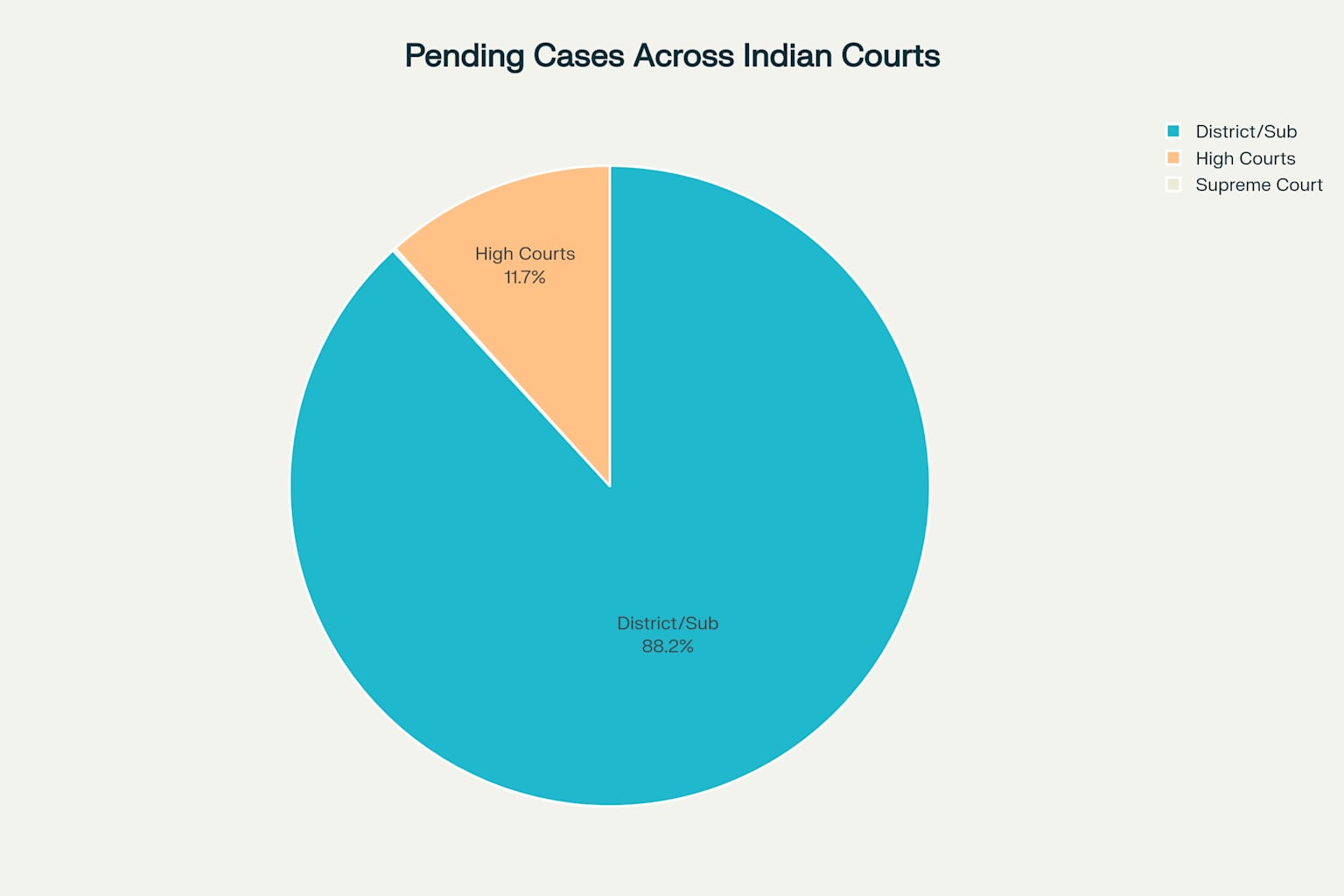
The distribution of these pending cases reveals that district and subordinate courts bear the heaviest burden, handling nearly 4.5 crore cases, while high courts manage approximately 60 lakh cases. This overwhelming caseload has resulted in average disposal periods extending beyond five years, creating significant economic and social costs for the nation.
Several factors contribute to this crisis, including inadequate judge-to-population ratios, procedural delays, insufficient infrastructure, and the increasing complexity of modern legal disputes. With only 20 judges per million people compared to 150-300 in countries like the US and China, India’s judicial system struggles to keep pace with the growing demand for legal services.
AI: The Game-Changing Solution for Judicial Efficiency
Artificial Intelligence has emerged as a transformative technology capable of addressing many systemic inefficiencies plaguing India’s courts. Unlike traditional digital solutions that merely computerize existing processes, AI introduces intelligent automation that can understand, analyze, and process legal information at unprecedented speeds.
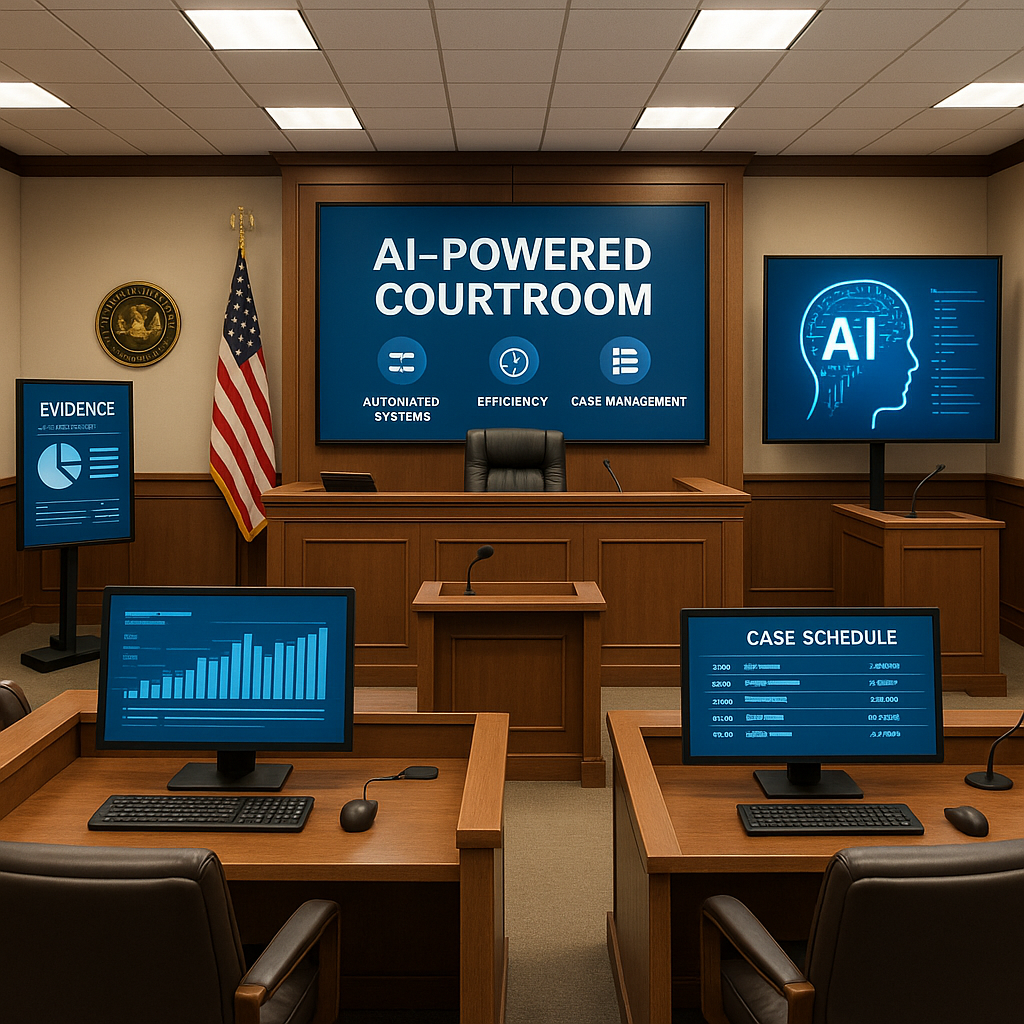
The integration of AI technologies including Machine Learning (ML), Natural Language Processing (NLP), and Optical Character Recognition (OCR) is enabling courts to automate administrative tasks, improve case tracking, and enhance decision-making processes. These technologies are particularly valuable in a legal system where the interpretation of written text and precedent analysis form the foundation of judicial decision-making.
Key AI Applications Transforming Indian Courts
SUPACE: Intelligent Legal Research Platform
The Supreme Court Portal for Assistance in Court’s Efficiency (SUPACE) represents one of India’s most ambitious AI initiatives in the judiciary. This AI-powered platform assists judges by collecting relevant facts and laws, making them instantly available during case proceedings.
Currently in the experimental phase, SUPACE is designed to understand the factual matrix of cases and provide intelligent searches of legal precedents. The system has been granted access to 200 Advocates-on-Record for testing and feedback, demonstrating the judiciary’s commitment to collaborative technology development.
AI-Powered Language Translation
Language barriers have long hindered access to justice in India’s multilingual society. The Supreme Court’s AI translation initiative has achieved remarkable results, translating 36,271 Supreme Court judgments into Hindi and 17,142 judgments into 16 other regional languages.
This AI-driven translation system, working in coordination with the National Informatics Centre (NIC), ensures that judicial decisions are accessible to citizens regardless of their linguistic background. The initiative aligns with the constitutional vision of access to justice and has been implemented without requiring separate funding.
Virtual Traffic Courts: A Success Story
Virtual traffic courts powered by AI automation represent one of the most successful implementations of judicial technology in India. These courts process traffic violations 24/7 using intelligent traffic management systems that automatically detect violations and generate e-challans.
| Metric | Value | Impact_Level |
|---|---|---|
| Total Cases Processed | 1.7 Crore | Very High |
| Fine Amount Collected (₹ Crores) | 283 Crores | Very High |
| Judicial Time Saved (Hours) | Thousands | High |
| Operating Hours | 24×7 | Very High |
| Cost Reduction (%) | 60-70% | High |
| Processing Speed Improvement (%) | 200-300% | Very High |
The impact has been remarkable: virtual traffic courts have processed 1.7 crore cases and collected ₹283 crores in fines, while saving thousands of hours of judicial time. This automated system operates continuously, providing a convenient interface for citizens while reducing the burden on traditional courts.
Document Digitization and Case Management
The e-Courts Project Phase III, approved with a budget of ₹7,210 crores, aims to create a unified technology platform for the entire judiciary. This initiative includes the digitization of 3,108 crore pages of legacy records and the establishment of 4,400 fully functional e-Sewa Kendras across court complexes.
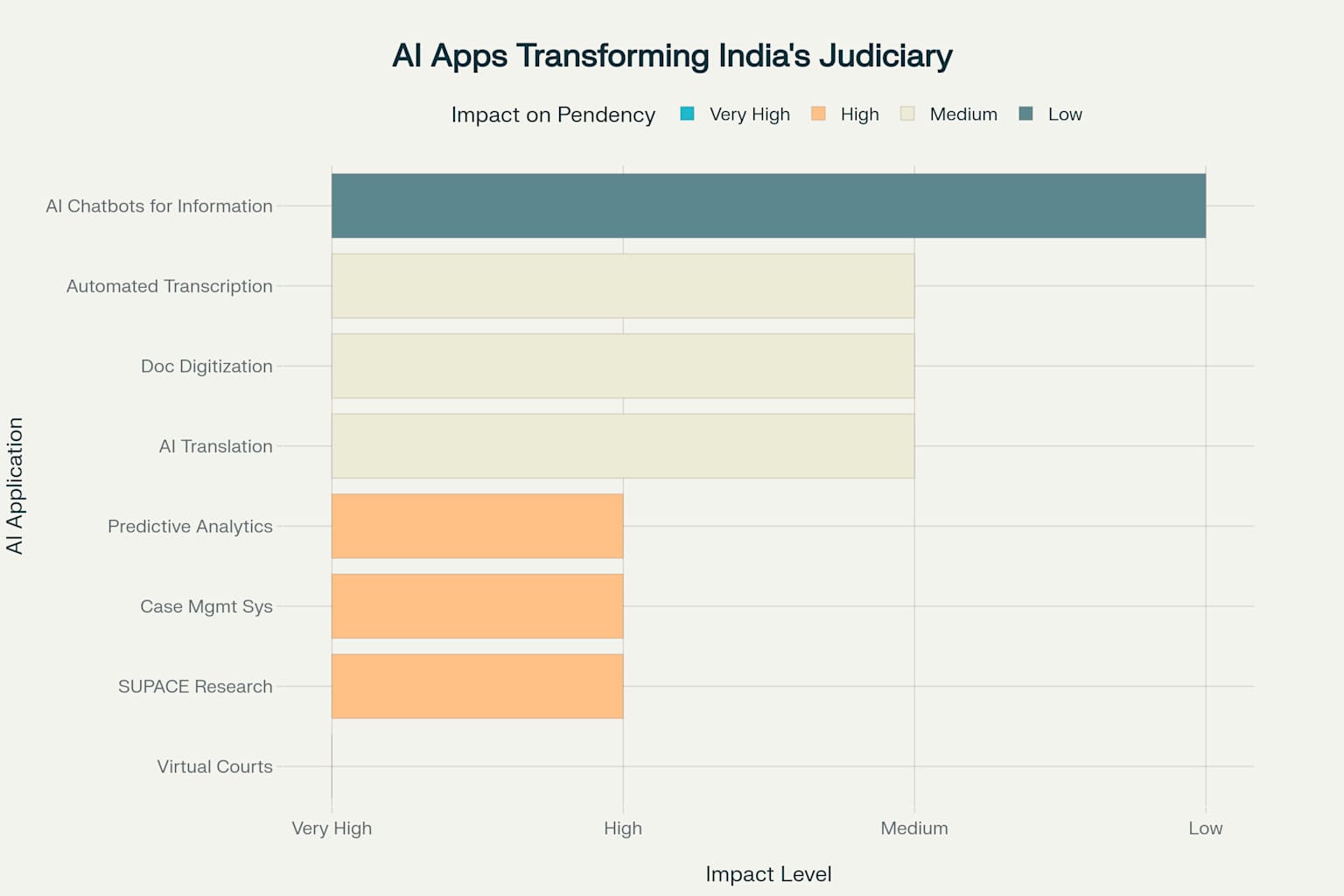
AI-driven document digitization using OCR technology is transforming paper-based processes into digital workflows, enabling faster case processing and reducing storage complexities. These systems can automatically extract relevant information from legal documents, categorize cases, and assist in scheduling hearings more efficiently.
Revolutionary Time Savings Through AI Implementation
The adoption of AI technologies has resulted in dramatic efficiency improvements across various judicial processes. Comparative analysis shows that AI-enabled systems can reduce processing times by 87% to 99% depending on the specific application.
| Process | Traditional_Time (Hours) | AI_Enabled_Time (Hours) | Time_Saved_Percentage |
|---|---|---|---|
| Legal Research | 8 | 1.0 | 87.5 |
| Document Translation | 24 | 0.5 | 97.9 |
| Case Scheduling | 4 | 0.25 | 93.8 |
| Traffic Fine Processing | 2 | 0.01 | 99.5 |
| Court Transcription | 8 | 0.5 | 93.8 |
| Case Status Inquiry | 1 | 0.001 | 99.9 |
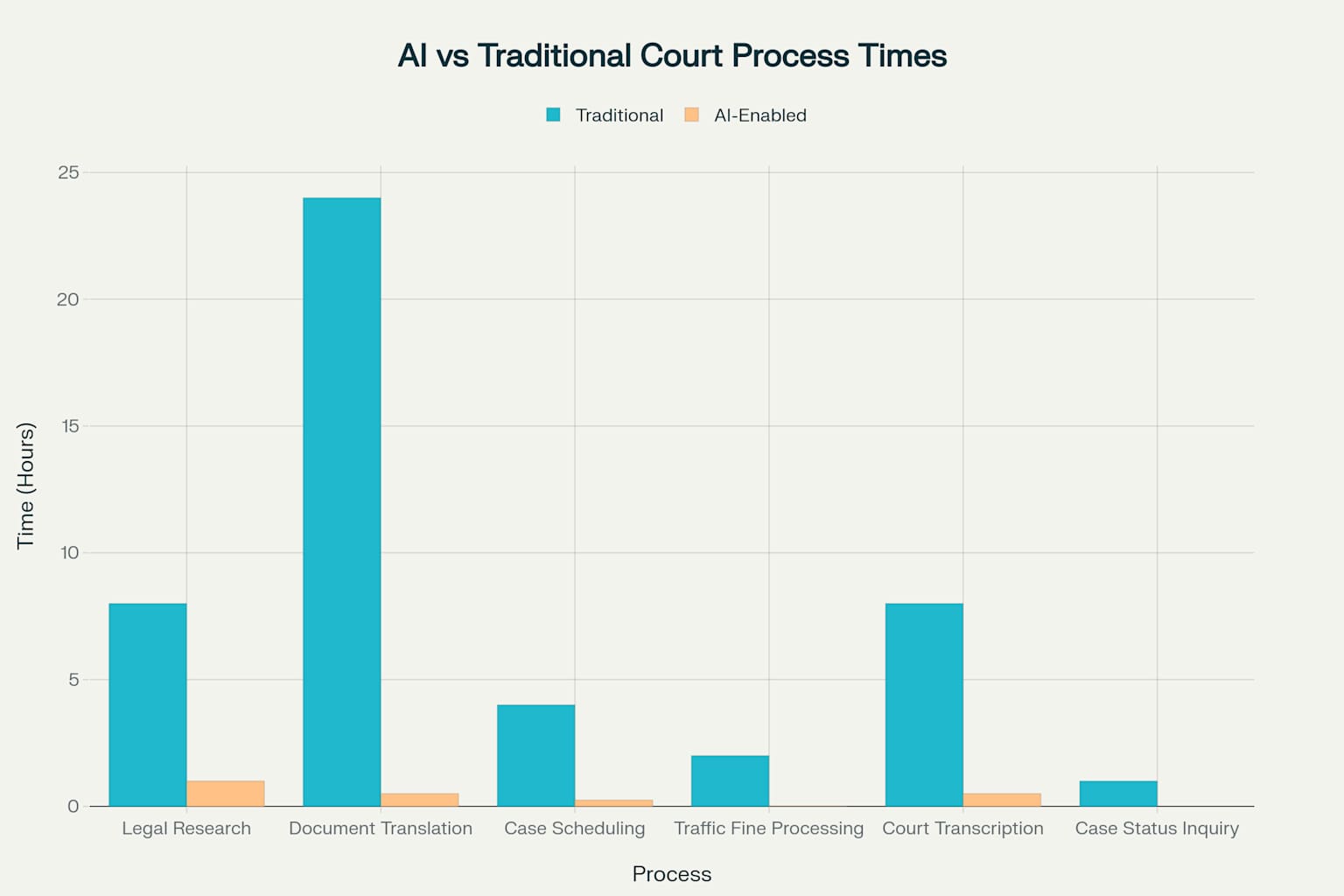
Legal research, which traditionally required 8 hours, can now be completed in just 1 hour using AI-powered tools. Document translation time has been reduced from 24 hours to just 30 minutes, while traffic fine processing has improved from 2 hours to mere minutes through automation.
AI Implementation Timeline and Milestones
The journey of AI integration in India’s judiciary began in 2019 with the constitution of an AI Committee by the Supreme Court. Since then, the implementation has followed a strategic timeline marked by significant milestones.
| Year | Milestone | Impact_Area |
|---|---|---|
| 2019 | AI Committee constituted by Supreme Court | Policy Framework |
| 2021 | SUPACE portal launched for legal research | Legal Research |
| 2022 | Virtual courts AI automation for traffic challans | Case Management |
| 2023 | e-Courts Phase III approved (₹7,210 crores) | Infrastructure |
| 2024 | AI translation: 36,271 judgments in Hindi | Language Access |
| 2025 | SUPACE testing with 200 advocates | User Testing |
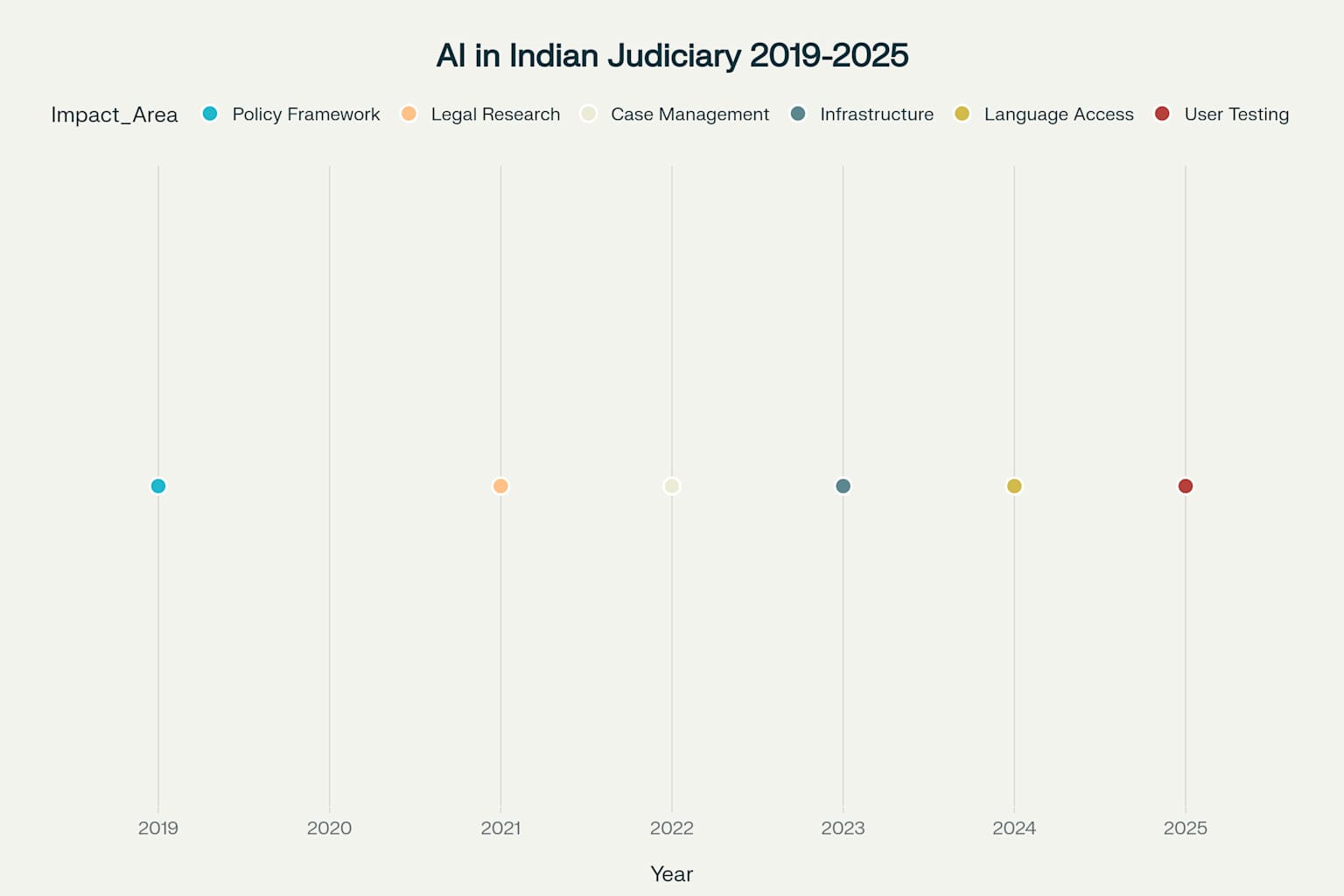
Key developments include the launch of SUPACE in 2021, the deployment of virtual courts for traffic management in 2022, and the approval of e-Courts Phase III in 2023. The current phase focuses on expanding AI translation services and testing user interfaces with legal professionals.
Addressing Challenges and Ensuring Fairness
While AI offers tremendous potential, its implementation in the judiciary must address concerns about algorithmic bias, transparency, and the preservation of human judgment in legal decision-making. The Indian approach emphasizes that AI tools serve as assistive technologies rather than replacement systems for judicial discretion.
Current safeguards ensure that AI is not used in actual decision-making processes but rather supports judges with research, case management, and administrative tasks. This balanced approach maintains the primacy of human judgment while leveraging technology’s efficiency benefits.
Legal experts emphasize the importance of training AI systems on diverse, unbiased datasets to prevent the perpetuation of existing inequalities. Regular audits and transparency measures are being implemented to ensure that AI applications meet the highest standards of fairness and constitutional compliance.
Economic Impact and Future Potential
The economic implications of AI adoption in the judiciary extend beyond direct cost savings. Delayed justice imposes significant costs on the economy, with various estimates suggesting substantial GDP losses due to prolonged legal disputes.
AI implementation is expected to reduce case disposal times, improve contract enforcement rankings, and enhance India’s business environment. The World Bank’s Ease of Doing Business rankings currently place India at 163 out of 190 countries for contract enforcement, highlighting the urgent need for judicial reforms.
Predictive analytics and machine learning models are being developed to forecast case outcomes with 78.5% accuracy, enabling better resource allocation and case prioritization. These capabilities will help courts manage their caseloads more strategically and reduce unnecessary delays.
The Road Ahead: Building a Digital-First Judiciary
The future vision for India’s judiciary involves creating a comprehensive ecosystem where AI enhances every aspect of judicial administration. This includes the development of AI chatbots for citizen services, automated case scheduling systems, and intelligent legal research platforms.
Online Dispute Resolution (ODR) platforms powered by AI are emerging as viable alternatives for resolving minor disputes without requiring physical court appearances. These systems can significantly reduce the burden on traditional courts while providing faster resolution for citizens.
Blockchain technology is also being explored to ensure the authenticity and integrity of digital evidence, addressing concerns about data manipulation and creating tamper-proof records of legal proceedings.
Conclusion: Transforming Justice Delivery for Modern India
The integration of AI in India’s judicial system represents more than a technological upgrade—it embodies a commitment to making justice accessible, efficient, and transparent for all citizens. While challenges remain in ensuring fairness and maintaining human oversight, the early results demonstrate AI’s transformative potential in addressing the 5-crore case backlog.
Success stories from virtual traffic courts, AI translation services, and intelligent case management systems provide a roadmap for broader implementation across the judicial hierarchy. As India continues to invest in digital infrastructure and AI capabilities, the vision of timely justice delivery becomes increasingly achievable.
The journey toward an AI-enhanced judiciary requires continued collaboration between technology providers, legal professionals, and policymakers to ensure that innovation serves the constitutional ideals of justice, equality, and accessibility. With sustained effort and strategic implementation, AI can help India’s courts not just manage their current caseload but also prevent future backlogs while strengthening public trust in the judicial system.


















